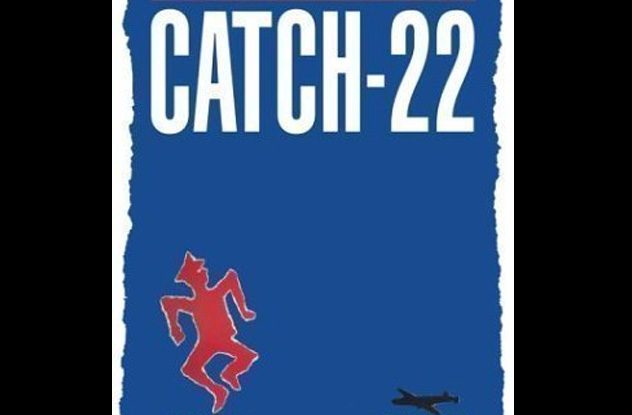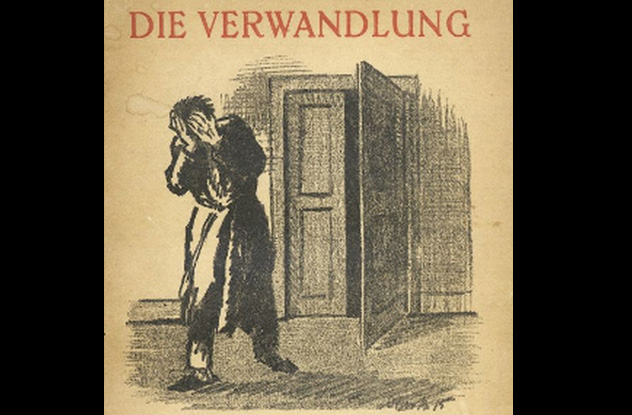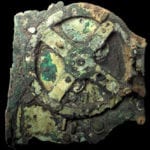 Music
Music  Music
Music  History
History 10 Less Than Jolly Events That Occurred on December 25
 Weird Stuff
Weird Stuff 10 Funny Ways That Researchers Overthink Christmas
 Politics
Politics 10 Political Scandals That Sent Crowds Into the Streets
 Weird Stuff
Weird Stuff Ten Bizarre Facts About The Doge Meme
 Our World
Our World 10 Ways Your Christmas Tree Is More Lit Than You Think
 Movies and TV
Movies and TV The 10 Coolest Stars to Set Sail on The Love Boat
 History
History 10 Things You Didn’t Know About the American National Anthem
 Technology
Technology Top 10 Everyday Tech Buzzwords That Hide a Darker Past
 Humans
Humans 10 Everyday Human Behaviors That Are Actually Survival Instincts
 Music
Music 10 Surprising Origin Stories of Your Favorite Holiday Songs
 History
History 10 Less Than Jolly Events That Occurred on December 25
 Weird Stuff
Weird Stuff 10 Funny Ways That Researchers Overthink Christmas
Who's Behind Listverse?

Jamie Frater
Head Editor
Jamie founded Listverse due to an insatiable desire to share fascinating, obscure, and bizarre facts. He has been a guest speaker on numerous national radio and television stations and is a five time published author.
More About Us Politics
Politics 10 Political Scandals That Sent Crowds Into the Streets
 Weird Stuff
Weird Stuff Ten Bizarre Facts About The Doge Meme
 Our World
Our World 10 Ways Your Christmas Tree Is More Lit Than You Think
 Movies and TV
Movies and TV The 10 Coolest Stars to Set Sail on The Love Boat
 History
History 10 Things You Didn’t Know About the American National Anthem
 Technology
Technology Top 10 Everyday Tech Buzzwords That Hide a Darker Past
 Humans
Humans 10 Everyday Human Behaviors That Are Actually Survival Instincts
10 Great Books That Were Not Appreciated During Their Time
Artists often go unrecognized during their lifetimes, and several great writers and thinkers found that their greatest works either went completely unnoticed or were poorly received when they first came out. The following books were not immediately appreciated for their genius, much to the dismay of the authors responsible for them.
10Moby-Dick
Herman Melville

Moby-Dick is Herman Melville’s most famous work, studied at length by literary scholars and constantly referenced in popular culture. While Melville was alive, however, it was hardly a best seller. The brilliantly executed work sold only 3,715 copies, a far cry from other works by Melville such as Typee (16,300) and Omoo (13,300). The reviews of the novel were far from kind. The Charleston Southern Quarterly Review wrote the following on the subject of Moby-Dick and its author:
“Mr. Melville’s Quakers are the wretchedest dolts and drivellers, and his Mad Captain . . . is a monstrous bore . . . His ravings, and the ravings of some of the tributary characters, and the ravings of Mr. Melville himself, meant for eloquent declamation, are such as would justify a writ de lunatico against all the parties.”
Melville’s death was hardly noteworthy at the time, and the lone newspaper that carried the news of his passing referred to him as a “long-forgotten author.” Melville’s genius would be recognized long after his death, and Moby-Dick, his magnum opus, would finally be hailed for the masterpiece he believed it to be.
9The Sound And The Fury
William Faulkner

In what is now regarded as an undeniable literary masterpiece written by one of the greatest authors of the 20th century, The Sound and the Fury documented the fall of a prominent Southern family and explored several innovative literary techniques. When the book was released, however, it was met with varying reviews, including one by a commentator who wrote, “The deliberate obscurity of the opening pages repels rather than invites.”
Faulkner himself was extraordinarily fond of the novel and was unrelenting in his belief that it was his masterpiece. According to Ben Wasson, Faulkner’s literary agent, Faulkner delivered his manuscript and declared, “This one’s the greatest I’ll ever write.”
For all of Faulkner’s hubris regarding his masterwork, the reviews of his novel were mixed at the time of its release. The novel, his fourth, itself was not successful commercially until the release of his sixth novel, titled Sanctuary, which was, according to Faulkner, written only out of need for financial compensation.
8On The Road
Jack Kerouac

Today, On the Road is known as the seminal work of the Beat Generation, with Jack Kerouac its leading man. When Kerouac first wrote the novel, however, no publisher was interested. In fact, Kerouac’s novel was rejected by at least six different publishers, but that didn’t stop him from writing.
During the early 1950s, with only one of his works published (The Town and the City), Kerouac completed five major novels that no one was interested in. Further complicating matters, Allen Ginsberg and William S. Burroughs, two writers heavily influenced by Kerouac’s spontaneous style of prose, enjoyed relatively immediate success after the completion of their works. Of his frustration, Kerouac wrote to his agent, saying, “Why don’t they realize I’m good?”
Of course, On the Road would eventually be published and his spontaneous style hailed as revolutionary by some yet decried by others. Of his negative reviewers, Ginsberg speculated that the CIA might have had something to do with it. Referring to literary magazines such as Encounter that were funded by the CIA, Ginsberg said, “They had that kind of mentality that would take Kerouac’s open wit, Whitmanic beauty, and honesty of person and find that creepy and subjective and egotistical or irresponsible. It’s a conservative, stupid party line.”
As his popularity surged, his other previously completed works would also be published, but this only contributed to further criticism of his spontaneous style because it seemed that the author was just churning out novels every couple of weeks.
7The Master And Margarita
Mikhail Bulgakov

Written over the course of 12 years between 1928 and 1940, The Master And Margarita was unpublished until 1967. Even then, it was heavily censored and edited by the Soviets due to some of its controversial material.
Bulgakov himself became something of a controversial figure in Soviet society, and despite Joseph Stalin’s fondness for a play written by Bulgakov called The Days of the Turbins, Bulgakov found that most of his works were banned. This was because the society in which he lived was becoming more ideologically rigid, and the author knew that his masterpiece would never be published in such an atmosphere. Due in part to this knowledge, Bulgakov actually burned an early version of his manuscript, a scene that is recalled in the novel as well.
Bulgakov’s wife—many believe she is the inspiration of the Margarita character—kept the manuscript for many years after the author’s death so it could eventually be released. It stands today as one of the greatest works of literature produced in the 20th century, even though it could have easily gone unpublished.
6Heart Of Darkness
Joseph Conrad

Heart of Darkness is Conrad’s most enduring work, yet it was overlooked when initially published. It was included along with two other novellas, and Heart of Darkness received the least attention of the three. Even a reviewer who appreciated Conrad as a writer dismissed Heart of Darkness as a “minor work” and criticized its “adjectival insistence upon inexpressible and incomprehensible mystery.”
It is the ambiguous nature of the novella that drew criticism at the time, and it is its ambiguous nature that has resulted in the praise that now endures. While it was not popular in its time, its subject matter has remained a standard in many literature courses and has perhaps endured due to the criticism levied by Chinua Achebe in An Image of Africa: Racism in Conrad’s Heart of Darkness. Or, more likely, it’s due to its adaptation in the film Apocalypse Now, featuring Marlon Brando as the Kurtz character and Martin Sheen as the adapted Marlow.
5Catch-22
Joseph Heller

The 1961 New York Times book review says it all: “Catch-22 has much passion, comic and fervent, but it gasps for want of craft and sensibility. A portrait gallery, a collection of anecdotes, some of them wonderful, a parade of scenes, some of them finely assembled, a series of descriptions, yes, but the book is no novel. One can say that it is much too long because its material—the cavortings and miseries of an American bomber squadron stationed in late World War II Italy—is repetitive and monotonous. Or one can say that it is too short because none of its many interesting characters and actions is given enough play to become a controlling interest. Its author, Joseph Heller, is like a brilliant painter who decides to throw all the ideas in his sketchbooks onto one canvas, relying on their charm and shock to compensate for the lack of design.”
The New York Times was not the only publication to take issue with Heller and his masterwork, as Roger H. Smith published a review in which he said of Catch-22, “its author cannot write,” and, according to John W. Aldridge, viewed the book as being “utterly formless, pornographic, and immoral because it is so anti-institutional and so indiscriminate in its repudiation of just about everything right-thinking people have been brought up to believe in.”
While many of Heller’s contemporaries viewed Catch-22 favorably, very few recognized it as a work that would become required reading in courses on American literature.
4The Great Gatsby
F. Scott Fitzgerald

Upon its initial publication, Fitzgerald’s most famous work was referred to as “a bewildering and tawdry performance.” The Saturday Review was also critical of Fitzgerald, saying the author “deserves a good shaking. Here is an unmistakable talent unashamed of making itself a motley to the view. The Great Gatsby is an absurd story, whether considered as romance, melodrama, or plain record of New York high life.” The book did not sell particularly well despite the efforts of the publisher to promote a work that had received largely mixed reviews.
Obviously, the popularity of The Great Gatsby has grown with time, as its titular character has been portrayed by both Robert Redford and Leonardo DiCaprio, both regarded as among the greatest actors of their respective generations. Furthermore, it has been adapted to film in one way or another on six different occasions.
Had The Great Gatsby achieved the success it now enjoys during Fitzgerald’s lifetime, it is quite possible that the author could have focused more of his attention on writing novels, which he considered to be his passion. Or, given his penchant for opulent living, it is just as likely he would have simply squandered any additional earnings on his lavish lifestyle.
3Lolita
Vladimir Nabokov

Lolita was turned down by five major publishers—Viking, Simon & Schuster, New Directions, Farrar Straus, and Doubleday. The editor of the Chicago Tribune’s Magazine of Books flatly stated, “Lolita is pornography, and we do not plan to review it.”
Paradoxically, this sort of reaction to the content of Lolita eventually brought it to prominence. The narrative involving a 12-year-old nymphet (Nabokov’s own phrasing) was scandalous, and scandal is always good for sales. So while many publishers rejected Lolita over fears of salaciousness, this same salaciousness brought it attention and, eventually, the acclaim that Nabokov and his work so richly deserved.
Even in death, there were questions regarding Nabokov’s writing gifts, as his New York Times obituary notes that readers “recognized Mr. Nabokov’s technical brilliance and mastery of form but were frequently baffled by his irrepressible sense of flippancy and his penchant for parody. Was he . . . a gifted artificer entranced by fun and games, or was he a creative and profound artist?”
2The Metamorphosis And Others
Franz Kafka

It was not until World War II—and many years after his death—that Kafka’s work gained much attention. His popularity grew as the oppressive communist governments many Eastern Europeans lived under in the 1960s caused Kafka’s work to resonate strongly with readers.
While The Metamorphosis was published during Kafka’s lifetime, it was not widely read. In fact, Kafka himself did not hold the novella in high regard, saying after its completion, “I am now reading The Metamorphosis at home and find it bad.” He felt “great antipathy to Metamorphosis” and its “unreadable ending.”
Kafka died before much of his work was published, and it very nearly went unpublished altogether. Had Kafka’s dying wishes been followed, all of his unpublished work would have been summarily burned. The Metamorphosis was published in a literary magazine in 1915, nine years before his death, but it hardly attracted the attention it now holds.
1Walden
Henry David Thoreau

It took five years to sell 2,000 copies of Thoreau’s iconic work, and the reviews were somewhat mixed at the time of its publication. None other than Robert Louis Stevenson commented that Thoreau had retreated into “womanish solicitude; for there is something unmanly, something almost dastardly” about such a lifestyle.
Today, however, if one were to merely to begin by saying, “I went to the woods,” then it is very likely that another would be able to complete the rest of the quote: “because I wished to live deliberately, to front only the essential facts of life, and see if I could not learn what it had to teach, and not, when I came to die, discover that I had not lived.”
Walden has been referenced time and again in popular culture and is widely regarded as one of the most important works ever written. Of Thoreau’s work, John Updike wrote, “Walden has become such a totem of the back-to-nature, preservationist, anti-business, civil-disobedience mindset, and Thoreau so vivid a protester, so perfect a crank and hermit saint, that the book risks being as revered and unread as the Bible. Of the American classics densely arisen in the middle of the 19th century—Hawthorne’s Scarlet Letter (1850), Melville’s Moby-Dick (1851), Whitman’s Leaves of Grass (1855), to which we might add Harriet Beecher Stowe’s Uncle Tom’s Cabin (1854) as a nation-stirring best seller and Emerson’s essays as an indispensable preparation of the ground—Walden has contributed most to America’s present sense of itself.”
J. Francis Wolfe is a freelance writer and a noted dreamer of dreams. He aspires to one day live in a cave high in the mountains where he can write poetry no one will ever see.








